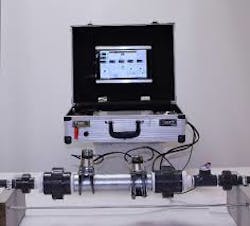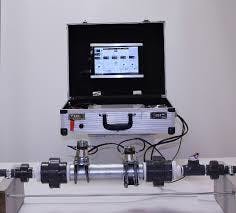Mercury remediation system demonstrated to reduce contamination in power plant wastewater
Aqua Metrology Systems (AMS), has recently completed the successful demonstration of a proof of concept for the removal of dissolved mercury (Hg2+) in power plant wastewater. The SafeGuard™ H2O system developed by AMS offers a low-cost, reliable remediation system proven to address a range of trace metal contaminants, including ionic mercury. With more than 300 coal ash impoundments across the U.S., ionic mercury among other hazardous chemicals is a primary concern for power plant wastewater and typically requires costly treatment prior to discharge to ensure environmental and public health.
The operation principle of the SafeGuard™ H2O system is based on a proprietary approach that generates an electrolytic stannous reagent on demand. As a result, the system is free from the drawbacks of using a traditional stannous chloride reagent. In fact, freshly generated stannous ion using tin metal precursor provides very accurate reagent dosing. This reagent poses no environmental and health risks.
AMS conducted a bench test study on its SafeGuard™ H2O mercury treatment system with both settled (clarified) Flue Gas Desulphurization (FGD) wastewater and unfiltered wastewater samples and achieved up to 99.9% mercury removal for settled FGD and up to 98% removal for unfiltered FGD wastewater. No sample preparation, such as pH, ORP adjustments were required to achieve high mercury removal efficiency. In addition, the system can operate in batch or continuous flow mode and is scaleable to large and small treatment volumes.
AMS’s bench test study concluded that its SafeGuard™ H2O system can effectively remove dissolved ionic mercury from both unfiltered and settled FGD blowdown wastewater, making it a cost-effective alternative to highly challenging and expensive existing mercury removal processes.
The operation principle of the SafeGuard™ H2O system is based on a proprietary approach that generates an electrolytic stannous reagent on demand. As a result, the system is free from the drawbacks of using a traditional stannous chloride reagent. In fact, freshly generated stannous ion using tin metal precursor provides very accurate reagent dosing. This reagent poses no environmental and health risks.
AMS conducted a bench test study on its SafeGuard™ H2O mercury treatment system with both settled (clarified) Flue Gas Desulphurization (FGD) wastewater and unfiltered wastewater samples and achieved up to 99.9% mercury removal for settled FGD and up to 98% removal for unfiltered FGD wastewater. No sample preparation, such as pH, ORP adjustments were required to achieve high mercury removal efficiency. In addition, the system can operate in batch or continuous flow mode and is scaleable to large and small treatment volumes.
AMS’s bench test study concluded that its SafeGuard™ H2O system can effectively remove dissolved ionic mercury from both unfiltered and settled FGD blowdown wastewater, making it a cost-effective alternative to highly challenging and expensive existing mercury removal processes.

